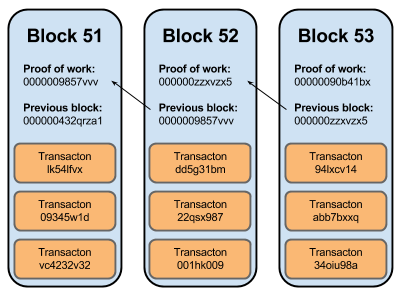Have you heard of Bitcoins — the digital currency that has recently experienced a dramatic increase in value? Now estimated at over $1,200 per Bitcoin, the revolutionary and controversial method of payment has been making headlines around the world. There are plenty of reasons why you might want to start performing transactions using Bitcoins, but before you can even do that you’ll have to find a way to collect Bitcoins!
Here are 5 different ways you can start earning yourself some Bitcoins.
Investing
Investing is the easiest way of accessing Bitcoins. This works in the same way as exchanges for other currencies — you go to an exchange (for “traditional” currencies you would go to a location that might do currency exchanges such as your bank; for Bitcoins you would visit a website such as Mt. Gox) and buy Bitcoins using the currency you possess.

I call this “investing” instead of exchanging because although the value of a Bitcoin fluctuates rather wildly, it is still showing an upward trend. This is partly due to the fact that more people are looking at Bitcoins as a legitimate currency, and partially because Bitcoins were designed for deflation as there are only a certain amount of Bitcoins that will ever exist. If you exchange Bitcoins now, they might be worth ten times as much in a week, month, or year from now. Then, you can exchange those Bitcoins for your traditional currency.
Sell Your Stuff!
A great way of earning Bitcoins is by selling some stuff you don’t need anymore on Bitcoin-friendly online markets. You could try listing an ad on Craigslist and set a condition that the buyer pay in Bitcoins. Then you can also sign up on a marketplace such as Coingig.com and sell your items there. The site works very much like eBay and gets you some Bitcoins for each successful sale. What Can I Buy With Bitcoin? [MakeUseOf Explains]If you’ve never heard of Bitcoin before, then don’t worry because you’re in the majority. Let’s just say that it’s a virtual currency (meaning you’ll never be able to hold an actual Bitcoin in your...READ MORE
Mining With Your GPU

Another way of earning Bitcoins is to mine them like the early pioneers of Bitcoin. Mining Bitcoins requires that you use a computer with a Bitcoin mining program on it. The program will then run complex calculations on your system, and reward you with a Bitcoin for each return value that meets the criteria for being considered a Bitcoin.
Since mining has occurred for quite a while now, the chances of winning big money this way is very slim — mining alone will take forever but could reward you with an entire Bitcoin, or you could mine as part of a mining pool, which shares found Bitcoins among the pool members based on how much work they’ve put into the pool.
Mining with PCs is best done with AMD graphics cards, as they are the ideal for performing the math done in Bitcoin mining. nVidia graphics cards suffer in comparison, and relying on just your CPU is unsuitable. If you put yourself on the miner’s line, choosing the best GPU for Bitcoin mining becomes a critical factor for the sheer number crunching that’s involved. How Can I Identify The Best GPUs For Bitcoin Mining?Quite recently, I wrote an article revealing the disadvantages to Bitcoin mining. More precisely, a major disadvantage to the actual mining process is the cost vs. revenue battle, where you may be spending more money...READ MORE
Mining With ASIC Cards
If you’re more serious about mining Bitcoins, there are ASIC cards that make Bitcoin mining far more efficient (in terms of electricity use), as they use less power and perform more calculations than the usual PCs. These machines aren’t very cheap though, but can be bought from various sources, including ButterflyLabs.
Mining On A Raspberry Pi

Lastly, if you’re more of a Bitcoin mining hobbyist rather than a first-timer or a professional, then you could buy yourself a cheap Raspberry Pi and use it for Bitcoin mining. You won’t get nearly the same performance as the specific machines mentioned above, but it’s still a fun thing to try out. And who knows — that ~$35 investment could turn into a $1,200+ Bitcoin.
Conclusion
As you can see, there are many different ways in which you can get involved in the trending virtual currency. Bitcoin is here, and it doesn’t matter if you want to make money from it or if you want to use it as an actual means of payment. After reading up on the few disadvantages to Bitcoins, there’s no reason why you shouldn’t give Bitcoin a serious consideration. Currency Of The Revolution, Or Tool For Online Vendors? The Many Faces Of Bitcoin [Feature]It's become an annual event: the fall of Bitcoin. You've probably read about it multiple times, and maybe even believe that the online, decentralized currency is already gone forever. It isn't. Created by a mysterious,...READ MORE
Share your Bitcoin stories with us in the comments below!




